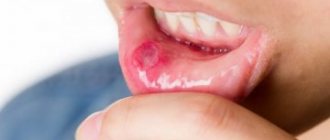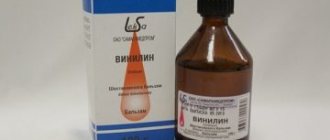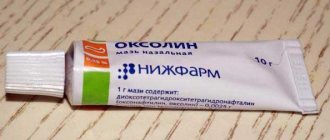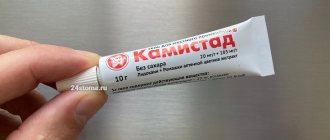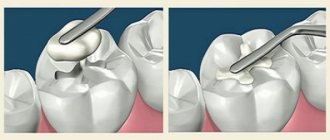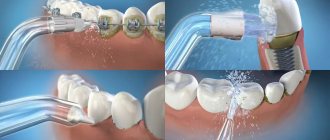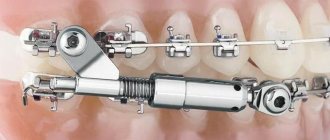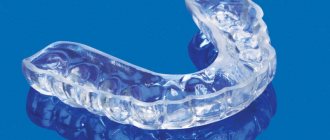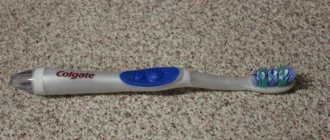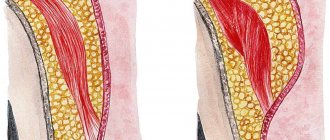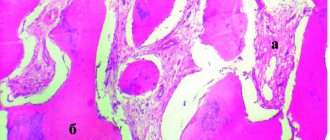Stomatitis is an inflammatory process in the oral cavity, affecting the tissue of the gums, tongue, inner surface of the lips and cheeks. It can occur in adults and children, but is always accompanied by severe feelings of discomfort and pain. Today, pharmacies offer a large selection of medications for the quick and successful treatment of pathology, however, when it comes to the appearance of an illness in children, you want the therapy to be safe.
It is for this purpose that many parents, and even adult patients, use stomatitis talker. The liquid is intended for pain relief, destruction of pathogenic bacteria, stopping the destructive process in tissues, and is suitable for patients of different ages.
Indications for use
In most cases, stomatitis occurs as a result of a viral, fungal or bacterial infection when a foreign agent invades the tissue of the oral mucosa. The situation is aggravated by a significant decrease in immunity; this problem is often observed in children, as a result of frequent colds and infectious diseases. Treatment of the pathology depends on what pathogen caused it.
What should you do first? If an infection is suspected in a young patient, parents should take him to the pediatrician and pediatric dentist. If an adult becomes ill, you should seek help from a therapist and dentist. An experienced specialist will quickly determine the type of pathogen, make the correct diagnosis and select the optimal treatment regimen.
When prescribing mash as the main means of therapy, the doctor will recommend the required composition, taking into account contraindications and possible side effects.
Indications for the use of talker:
- inflammatory process on the surface of the oral mucosa;
- development of puffiness and swelling of tissues;
- the appearance of bad breath;
- bleeding during brushing and rinsing;
- the formation of single or multiple ulcers on the surface of the lips, tongue, cheeks and gums;
- burning, itching and soreness in the mouth;
- temperature increase;
- lack of appetite, weakness (mostly these signs are observed in children);
- dry mucous tissue, which causes a constant desire to drink water.
Nowadays you can prepare many medicines to order.
These symptoms occur at different stages of the disease; it is when they appear that it is recommended to start using the mash for stomatitis. In children, the disease can develop due to insufficient intake of iron, folic acid and B vitamins into the body (here the provoking factor is an unbalanced diet).
In adults, stomatitis can occur as a result of inadequate oral care, concomitant infectious and atrophic gum diseases (gingivitis, periodontitis, periodontal disease), as well as abuse of tobacco and alcoholic beverages.
Kinds
Today, 8 types of stomatitis can be diagnosed:
- bacterial;
- aphthous - manifests itself when immunity decreases due to gastrointestinal diseases and anemia;
- herpetic – occurs due to the herpes virus;
- viral;
- angular;
- allergic – a reaction to an allergen entering the child’s body;
- traumatic - the cause may be an accidental bite of the lip with teeth or scratches on the gum;
- fungal – infection of the oral cavity by fungi of the genus Candida.
All types of stomatitis can occur in childhood. However, from birth to 3 years, children are especially susceptible to aphthous, candidal, herpetic and allergic types. During the period of active growth of baby teeth, traumatic stomatitis often appears, caused by rupture of the soft tissue of the gums.
Note! Stomatitis does not always occur on its own. Quite often, rashes in the mouth are a sign of other diseases, so before treatment it is necessary to carry out a series of diagnostic measures to discover the exact cause.
Symptoms
The classic clinical picture for diagnosing stomatitis includes the following symptoms:
- swelling of the mucous membrane;
- the appearance of a white or yellowish coating;
- bad breath;
- dryness or excessive salivation;
- enlarged lymph nodes and increased temperature.
Stomatitis in children has similar and different symptoms. Each type of disease has its own differences in manifestations.
With allergic stomatitis, minor ulcerative lesions appear on the palate, gums, cheeks, and lips. They pass as soon as the irritant can be identified and removed. With aphthous, even one spot with a diameter of up to 1 cm may appear in the mouth. Its outer part is covered with a film, the ulcer is yellow, and its edges are inflamed. If stomatitis is herpetic, then the mucous membrane is affected by numerous rashes that merge into one large wound. These are blisters with clear liquid and are extremely painful. Often the herpes virus causes a deterioration in the general condition of the child’s body, accompanied by body aches and high fever.
The most common type of stomatitis in a child’s mouth is candidiasis. Its common name is thrush. 9 out of 10 parents have encountered this phenomenon at least once. It is characterized by the appearance of a white cheesy coating on the tongue, gums, and cheeks of the baby. It is often observed after completing a course of antibacterial therapy or as a consequence of infection of the mother’s nipples by Candida fungus. Candidiasis can also be caused by poor hygiene.
On a note! Regardless of the type of stomatitis, its treatment should be comprehensive and begin immediately after the first signs of damage to the oral cavity are detected!
Treatment options
How to cure stomatitis in a child? It’s worth noting right away that you can’t prescribe medications to your baby yourself. Only the pediatrician makes a diagnosis and makes recommendations for therapy. Attempts to overcome the disease on your own can lead to a worsening of the little patient’s condition. To determine the causative agent of the inflammatory process, a scraping is made and a virological study is carried out.
For stomatitis in children, what treatment will be most effective? Only those therapeutic measures will help that will affect the disease comprehensively, eliminating both the cause and external manifestations.
Medicines
When an accurate diagnosis is established, dentists prescribe medications for the treatment of stomatitis in children. They are conventionally divided into symptomatic and special.
The purpose of the first is to eliminate the symptoms that accompany the disease. For this purpose the following is prescribed:
- vitamin complexes to strengthen the body;
- antiviral drugs that fight viruses;
- antipyretic and anti-inflammatory drugs;
- anesthetic gels;
- ointments and solutions for treating the oral cavity.
- need to drink plenty of fluids
- gentle diet (exclude sour, salty, spicy)
Candidal stomatitis is treated with special pharmaceuticals that contain substances that kill the fungus. Creams suitable for internal use are prescribed. If an allergic type is detected, the pediatrician will add antihistamine drops or tablets to the general list. If the rash is caused by the herpes virus, you cannot do without taking antiviral drugs, as well as local treatment of the mucous membranes with antiherpetic ointment.
Attention! The entire oral cavity needs to be treated, since pathogens are found everywhere on the mucous membrane. They are not visible to the naked eye, but if they remain in the mouth, they will continue to spread and the treatment will be delayed.
Folk remedies
Have you noticed stomatitis in a child and don’t know how to treat it? Drug therapy can be supplemented with the use of traditional medicine. Compositions prepared from natural ingredients are used to treat stomatitis in children over 2 years of age.
The following formulations are suitable for treating mouth ulcers.
Soda and salt
0.5 tsp each Dissolve the components in warm water. Rinse your mouth with the solution 3-4 times a day after meals. Baking soda relieves inflammation and disinfects well. The same composition, only diluted with water to a mushy consistency, can be used to clean off plaque from fungal stomatitis using a finger wrapped in gauze.
Honey and aloe
The leaf of the plant is ground to a puree, and the same amount of natural honey is added to it. Apply to affected areas three times a day.
Chamomile with honey
Dried flowers are brewed in the proportion of 1 tbsp. for 250 ml of boiling water. Add 2 tsp to the cooled broth. honey Rinse your mouth with warm liquid 2-3 times a day.
Rinses can be prepared from other ingredients:
- sage;
- rosehip;
- St. John's wort;
- oak bark;
- flaxseeds;
- yarrow;
- calendula;
- propolis tinctures.
Lotions of essential oils help a lot.
Important! Folk remedies can only be used after consulting a pediatrician!
How to prevent stomatitis
To reduce the risk of getting an infection in your mouth, you should:
- regularly wash toys, hands, pacifiers, bottles;
- carry out wet cleaning and ventilate the room where the baby spends his leisure time;
- strengthen the immune system: strengthen the child, give vitamins, maintain proper sleep and wakefulness;
- provide a balanced diet;
- fight the bad habit of biting nails or other objects (pencils, pens, rulers);
- Make an appointment with the dentist twice a year for a routine examination.
Any disease should be treated in a timely manner, otherwise negative consequences cannot be avoided. Carefully examine the child’s oral cavity at the first complaints. When stomatitis occurs in infants, the first symptoms include behavioral changes, crying, and refusal of the breast or bottle. Children aged 1 year and older will be able to independently point out to their parents the source of discomfort. Get treated promptly and be healthy!
Composition of the drug
The medicine received its name “chatterbox” for the reason that before use it must be shaken each time in order to thoroughly mix all the components. You can purchase the product at the pharmacy or prepare it yourself at home; there are several recipe options for this.
Composition of the pharmaceutical mash:
- streptocide is a substance belonging to the group of sulfonamide antibiotics;
- Norsulfazole is an antimicrobial drug;
- Anestezin is a component due to which it is possible to achieve an analgesic effect;
- sea buckthorn oil, which has powerful anti-inflammatory and healing properties.
What are the advantages of purchasing a pharmacy version of talker? Firstly, the medicine is manufactured under sterile conditions, which is very important if it is prescribed to a child. Secondly, the components are mixed in the exact recommended dosage, which makes the product safe to use. Thirdly, the shelf life of an open bottle is no longer than 20 days, which forces the baby’s parents to throw out the expired product and not reuse it.
Homeopathic treatment
Many parents prefer to treat their children with homeopathy. However, such treatment should only be auxiliary and complement traditional methods.
In pediatric practice, the following drugs can be used:
- Borax,
- Mercuriussublimatuscorrosives,
- Natrum muriaticum,
- Arsenicum.
The group of homeopathic medicines also includes the combination remedy Malavit, which combines homeopathic components, natural herbal extracts and water from artesian springs. For rinsing with stomatitis, a solution is prepared from 5 drops of the drug and 100 ml of water (children under 5 years old need only one drop per year of life). The procedure is carried out 3-5 times a day after meals.
Homemade recipes
To prepare the product yourself, you must first prepare the necessary medicinal components, a glass container with a tight-fitting lid. The jar or vial must be sterilized in boiling water. The resulting liquid cannot be stored for longer than 3 days, even if kept in the refrigerator - this must be remembered during treatment, especially if the solution is being prepared for children.
Homemade mash recipes:
Ohu for teeth whitening
- You need to take one tablet each of Furacilin, Tetracycline and Streptocide (each of these drugs has its own antiviral, antibacterial and antimicrobial properties). You will also need 1 ampoule of Novocaine in a 10% concentration to achieve an analgesic effect. First you need to crush Tetracycline and Streptocide tablets into a fine powder and add Novocain to them. Separately, the Furacilin tablet is poured with boiling water in an amount of 250 mg and infused for at least two hours. After the time has passed, Furacilin is poured into a container with the remaining components. The container is tightly closed with a lid, the composition is shaken and applied up to 6-8 times during the day.
- The ingredients are a tablet of the antifungal drug Nystatin, a teaspoon of sea buckthorn oil and one ampoule of vitamin B12. The tablet is first crushed to a powder state, then the liquid components – oil and vitamin – are added to the container. After thorough shaking, the composition is used three times a day.
- Ingredients: sea buckthorn oil in the amount of one teaspoon and 1 ampoule of lidocaine (this is an excellent pain reliever) in a 10% concentration. The components are mixed in a sterile container, the solution is shaken, after which it can be used to treat the affected areas of the mucous membrane up to 6-8 times a day.
- Ingredients – sunflower oil (1 tbsp), Methyluracil solution (1 ampoule), Anestezin (1 ampoule), a teaspoon of sea buckthorn oil and the same amount of Shostakovsky balm. The listed components have regenerating, healing, anti-inflammatory and enveloping properties. After mixing and shaking the ingredients, you can use the mash 3-4 times a day.
- Ingredients: chicken protein (necessarily fresh) and 120 ml of boiled, pre-cooled water. The protein is thoroughly beaten in water, after which the affected oral cavity is treated with the composition four times a day; you can also rinse with this solution. Before each use, prepare a new composition and discard the remains of the old one.
Furacilin is an antiseptic that has been proven over the years
When preparing different compositions of mash, you must observe the recommended proportions, sterility and caution.
Table of children's medications against stomatitis by age
| Drug/Age | 1 month | 3 months | 4 months | 5 months | 7 months | 1 year | 2 years | 3 years | 5 years | 6 years | 10 years |
| Paracetamol | + | + | + | + | + | + | + | + | + | + | + |
| Soda | + | + | + | + | + | + | + | + | + | + | + |
| Candide | + | + | + | + | + | + | + | + | + | + | + |
| Viferon | + | + | + | + | + | + | + | + | + | + | + |
| Suprastin | + | + | + | + | + | + | + | + | + | + | + |
| Ibuprofen | — | + | + | + | + | + | + | + | + | + | + |
| Holisal | — | — | + | + | + | + | + | + | + | + | + |
| Kamistad | — | — | + | + | + | + | + | + | + | + | + |
| Parlazin | — | — | + | + | + | + | + | + | + | + | + |
| Kalgel | — | — | — | + | + | + | + | + | + | + | + |
| Chlorhexidine | — | — | — | — | + | + | + | + | + | + | + |
| Furacilin | — | — | — | — | + | + | + | + | + | + | + |
| Iodinol | — | — | — | — | — | + | + | + | + | + | + |
| Vinylin | — | — | — | — | — | + | + | + | + | + | + |
| Malavit | — | — | — | — | — | + | + | + | + | + | + |
| Fduconazole (Futsis) | — | — | — | — | — | + | + | + | + | + | + |
| Ingalipt | — | — | — | — | — | — | + | + | + | + | + |
| Honey | — | — | — | — | — | — | + | + | + | + | + |
| Propolis | — | — | — | — | — | — | + | + | + | + | + |
| Nystatin | — | — | — | — | — | — | + | + | + | + | + |
| Oxolinic ointment | — | — | — | — | — | — | + | + | + | + | + |
| Hexoral | — | — | — | — | — | — | — | + | + | + | + |
| Miramistin | — | — | — | — | — | — | — | + | + | + | + |
| Lugol | — | — | — | — | — | — | — | — | + | + | + |
| Stomatidin | — | — | — | — | — | — | — | — | + | + | + |
| Stomatophyte | — | — | — | — | — | — | — | — | — | + | + |
| Metrogil Denta | — | — | — | — | — | — | — | — | — | + | + |
| Hydrogen peroxide | — | — | — | — | — | — | — | — | — | — | + |
| Chlorophyllite | — | — | — | — | — | — | — | — | — | — | + |
| Aekol | — | — | — | — | — | — | — | — | — | — | + |
How to use
How many times to treat the oral mucosa with different compositions of the mash is already written above. However, general instructions for use still exist. Small children do not know how to rinse their mouths themselves; here it will be enough to treat the surface with cotton wool, sterile gauze or a bandage. Before using the mash, you must first clean the oral cavity of microbial plaque using a solution of potassium permanganate, soda or a decoction of chamomile flowers.
Treatment of mucous membranes with mash should begin 30 minutes after eating. To achieve a lasting result, after applying the composition you should not drink or eat for half an hour. First, the composition must be shaken well in a container, a sterile bandage, a piece of gauze wrapped around a finger, a cotton swab or just a washed finger should be wetted and the oral mucosa with signs of stomatitis should be thoroughly treated. Do not put too much pressure on the tissue to avoid bleeding and pain.
If after a few days of regular and correct use of the mash no positive results are observed, it is recommended to visit the dentist again so that he can conduct a more thorough examination and, possibly, prescribe other methods of therapy.
You cannot consider stomatitis a “common” childhood disease and take it lightly, thinking that it will go away on its own. In addition to the fact that oral ulcers bring a pronounced feeling of discomfort, pathology indicates infection with a fungus, virus or bacteria - and this is already an indication for adequate treatment.
Advantages of the drug "Vinilin" for the treatment of stomatitis
Vinilin (also known as Shostakovich's Balm) is an effective remedy that has an antiseptic, antimicrobial and restorative effect. Its active ingredient is polyvinox.
Vinylin in the treatment of stomatitis performs the following tasks:
- disinfects the oral mucosa;
- accelerates the restoration of damaged tissues and speeds up healing;
- relieves pain;
- prevents the possibility of a new infection entering the damaged mucosa.
Vinilin tends to envelop the oral mucosa with a special protective film; the same situation occurs in the stomach. This way you can prevent the occurrence of allergic complications due to stomatitis.
When using the drug in combination with other drugs, the effect of treatment can be greatly increased. But only a doctor should prescribe any medications, after tests have been taken and an accurate diagnosis has been made.
For example, in the case of mild stomatitis, it is enough to use Vinilin and rinse the mouth with a decoction of herbs. In case of complex disease, the dentist may add antibacterial agents.
The drug Vinilin is available in several forms:
- solution;
- pills;
- balm.
What not to do with stomatitis
Often the older generation, when asked “how to treat your mouth for stomatitis?” Young mothers are advised to use alcohol solutions of brilliant green, blue, or fucorcin. It is believed that such products are good at disinfecting purulent wounds. However, this should not be done, since alcohol causes increased symptoms of inflammation and pain, which will negatively affect the child’s condition.
Another popular remedy against candidal stomatitis is borax in glycerin. The use of this product in childhood is also undesirable, since it contains quite toxic components, an overdose of which can cause significant harm to the baby’s health.
«
In the article we tried to provide the main means and methods of treating stomatitis in children. However, only a doctor can prescribe the correct treatment after examining the child. Delaying a visit to the doctor can cause serious complications and future health problems for the baby.
How to make a solution of furatsilin
Ready-made liquid cannot always be bought at a pharmacy. More often Furacilin is found in tablets. The treatment regimen, duration, and dosage form are determined by the doctor, and each patient’s prescriptions are different. The doctor takes into account individual characteristics. Usually 1 – 2 tablets are crushed to a powder and stirred in a glass of warm water.
For faster dilution, it is recommended to use boiling water. For stomatitis, pharyngitis, tonsillitis, a solution is prepared to rinse the oropharynx: per 100 ml - 2 mg (1 tablet) of furatsilin. The duration depends on the nature of the localization of the infection. Take a small sip of the prepared product, throw back your head and rinse your larynx for 2 – 3 minutes.
Prevention
The occurrence of stomatitis is much easier to prevent. To do this, just follow simple rules.
Recommended:
- clean your mouth twice a day under parental supervision;
- regularly take your child to the dentist for preventive examinations;
- promptly treat dental caries;
- avoid injury to the oral mucosa;
- timely treat all somatic diseases in the baby;
- disinfect dishes and toys;
- prohibit the baby from putting dirty objects and hands in his mouth.
Stomatitis has different origins and is caused by different pathogens. Therefore, only a doctor should treat these diseases. Self-medication is unacceptable, since a thorough diagnosis is necessary before treatment. Identification of the causative agent of the disease is a condition for successful treatment.
How many days does treatment last?
Correct, competent treatment of stomatitis significantly speeds up the healing process. Depending on the type of disease, it lasts for 3 to 7 days. If after 1 week of treatment the signs of the disease have not disappeared or worsening is observed, then the patient most likely has complications. The following factors may be the probable reasons for its development.
- The patient self-medicated or did not follow the doctor's instructions.
- Decreased immunity.
- The presence of chronic diseases of the body.
- Regular injury or infection of the oral mucosa.
- Undiagnosed allergy.
- Having bad habits - smoking, chewing, etc.
- Depression or frequent stress.
- Improper oral hygiene.
- Uncontrolled use of medications.
- The use of oral hygiene products containing sodium lauryl sulfate.
Returning to the question - can stomatitis go away on its own - it should be noted that a seemingly harmless disease can turn into serious problems for the patient. Therefore, you should remember three “don’ts” - don’t
engage in self-medication,
do not
put off visiting a specialist and
do not
ignore the recommendations of your doctor.
How to understand that stomatitis has passed?
Very simple! A complete cure is indicated by the absence of lesions in the oral mucosa. There are no small ulcers, wounds or plaque on the cheek, palate, lip, tongue or tonsil area. The mucous membrane looks healthy, is well moisturized, does not cause pain and does not create discomfort during eating, talking, smiling and performing hygiene procedures.
Trade names
The active substance in known dosage forms is nitrofural (a word synonymous with “furatsilin”). Pharmaceutical companies now produce antimicrobial agents under different names:
- "Chlorhexidine";
- "Kombutek";
- "Lifuzol";
- "Miramestin";
- "Betadine";
- "Antiseptol".
There are also other names. The drugs are over-the-counter and it is recommended to follow general recommendations on storage conditions for drugs and use.
Causes
The pathology is caused by numerous infectious agents, as well as oral injuries and allergic reactions. The reason for its development may be a lack of certain vitamins and microelements.
The following types are distinguished:
- viral (herpetic - present in 80% of all cases, the rest are represented by measles, chickenpox, influenza, rubella, mononucleosis, adenovirus, enterovirus, papillomavirus viruses);
- fungal – candidiasis is detected in the vast majority of cases in infants; in older children it occurs due to immunodeficiency, diabetes, or taking antibiotics;
- bacterial - most often it is caused by various types of staphylococci and streptococci; in rare cases, stomatitis is caused by pathogens of tuberculosis, syphilis, diphtheria, gonorrhea;
- allergic – often the pathology develops as a reaction to various products, components of toothpaste, chewing gum;
- autoimmune – in the occurrence of aphthous lesions, one of the leading causes is considered to be the presence of autoimmune problems;
- traumatic - in children, the oral mucosa is less stable than in adults; it is easily damaged under the influence of chemical and physical agents, or mechanical trauma.
The factor that caused this pathology determines the treatment tactics and what drugs will be prescribed.
There are factors that contribute to the development of the disease.
These include:
- diseases of the gastrointestinal tract (duodenitis, gastritis, intestinal dysbiosis, colitis, enteritis);
- blood diseases;
- pathologies of the nervous and endocrine systems;
- helminthiases;
- prematurity;
- insufficient oral hygiene;
- weak local immunity;
- lack of microelements, vitamins (B vitamins, selenium, zinc).
All these numerous factors cause and contribute to the development of stomatitis. In this regard, there is a significant difference in the treatment of different types of disease.
